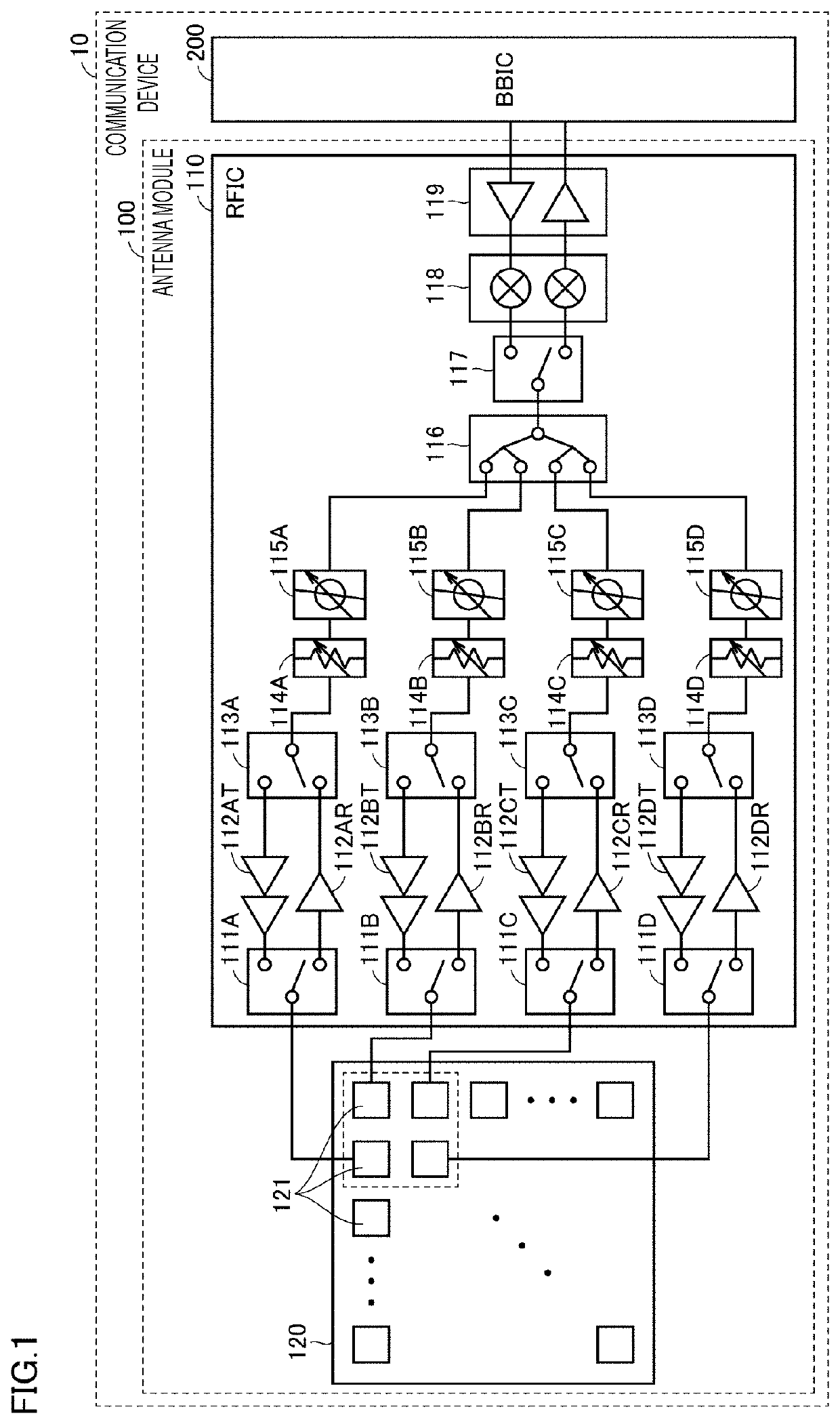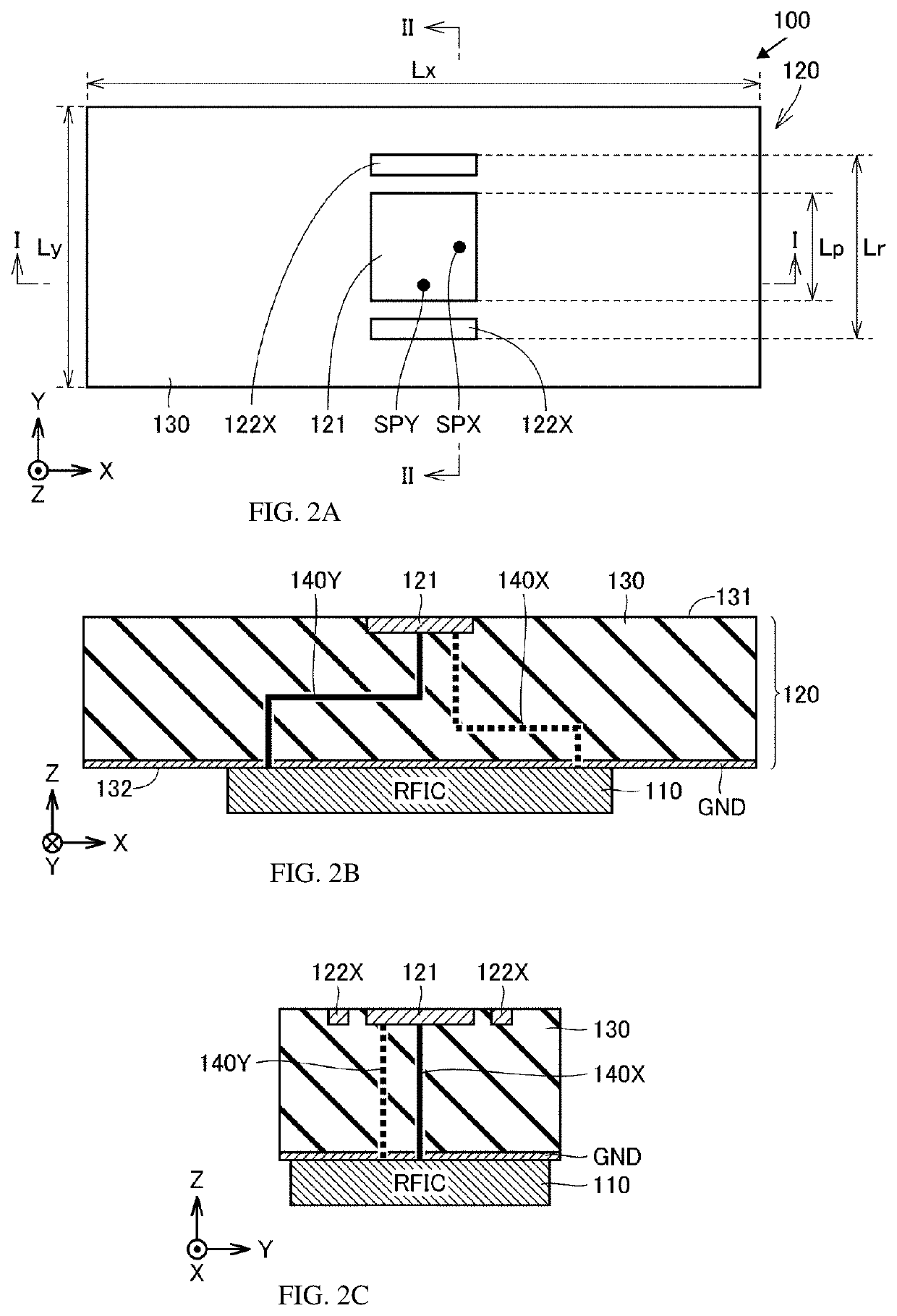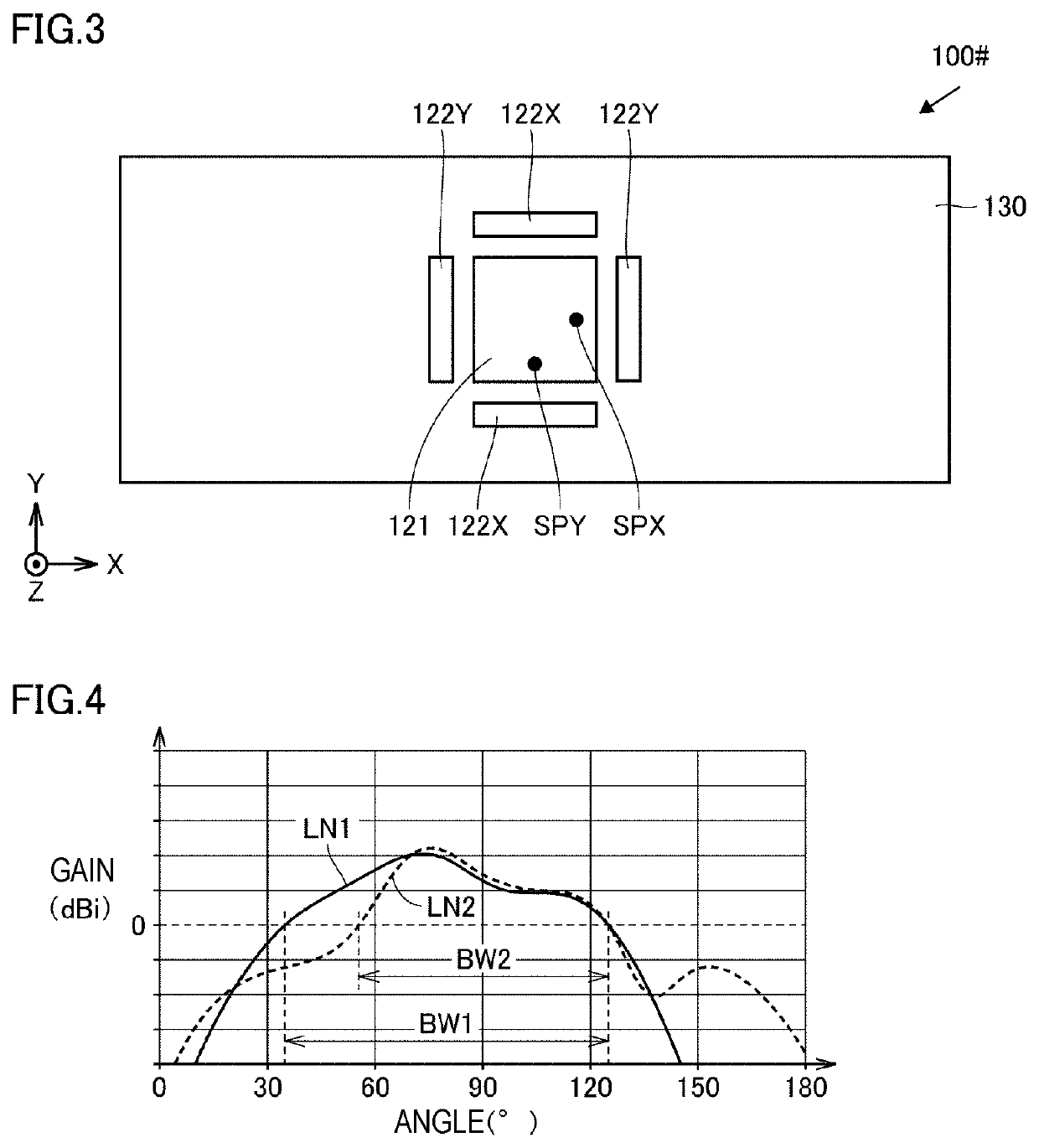Antenna device
- Summary
- Abstract
- Description
- Claims
- Application Information
AI Technical Summary
Benefits of technology
Problems solved by technology
Method used
Image
Examples
embodiment 1
[0026](Basic Configuration of Communication Device)
[0027]FIG. 1 is an example of a block diagram of a communication device 10 to which an antenna device 120 according to the embodiment 1 is applied. The communication device 10 is, for example, a mobile phone, a mobile terminal such as a smartphone, a tablet, or the like, a personal computer with a communication function, or the like.
[0028]Referring to FIG. 1, the communication device 10 includes an antenna module 100 and a BBIC 200 that makes up a baseband signal processing circuit. The antenna module 100 includes a RFIC 110 that is an example of a feed circuit and the antenna device 120. The communication device 10 up-converts a signal sent from the BBIC 200 to the antenna module 100 into a radio frequency signal and radiates the radio frequency signal from the antenna device 120, and down-converts a radio frequency signal received by the antenna device 120 and performs processing on the signal in the BBIC 200.
[0029]In FIG. 1, for ...
embodiment 2
[0055]In the embodiment 1, the example is described in which only one feed element is arranged in the antenna device.
[0056]In the embodiment 2, an example in which a plurality of feed elements is arranged in an array shape is described. In an array antenna, by adjusting the phases of radio frequency power supplied to adjacent feed elements, it becomes possible to use beamforming that changes the directivity (radiation angle) of a radio wave being radiated from the entire antenna.
[0057]FIG. 5 is a perspective view of an antenna device 120A according to the embodiment 2. Note that in FIG. 5, the RFIC 110 is not illustrated.
[0058]Referring to FIG. 5, in the antenna device 120A, four feed elements 121 are arranged on the dielectric substrate 130 in line along the X-axis direction. Furthermore, for each feed element 121, the parasitic elements 122X are formed at positions that face the sides of the feed element 121 parallel to the X-axis direction. Note that in the example of FIG. 5, the...
embodiment 3
[0064]In the embodiment 2, the example is described in which the dielectric substrate has a plane shape, and the array antenna radiates a radio wave in one direction.
[0065]In the embodiment 3, an example is described in which part of the dielectric substrate is bent, and the array antenna is capable of radiating a radio wave in different directions.
[0066]FIG. 10 is a perspective view of an antenna device 120C according to the embodiment 3. In the antenna device 120C, the dielectric substrate 130 includes a first part 135 parallel to the X-Y plane of FIG. 10 and a second part 136 that is bent from an end part of the first part 135 and parallel to the Z-X plane of FIG. 10. The length of a side of the first part 135 along the X-axis direction is La, and the length of a side of the first part 135 along the Y-axis direction is Lb. Furthermore, the length of a side of the second part 136 along the X-axis direction is also La, and the length of a side of the second part 136 along the Z-axi...
PUM
 Login to View More
Login to View More Abstract
Description
Claims
Application Information
 Login to View More
Login to View More - R&D
- Intellectual Property
- Life Sciences
- Materials
- Tech Scout
- Unparalleled Data Quality
- Higher Quality Content
- 60% Fewer Hallucinations
Browse by: Latest US Patents, China's latest patents, Technical Efficacy Thesaurus, Application Domain, Technology Topic, Popular Technical Reports.
© 2025 PatSnap. All rights reserved.Legal|Privacy policy|Modern Slavery Act Transparency Statement|Sitemap|About US| Contact US: help@patsnap.com



